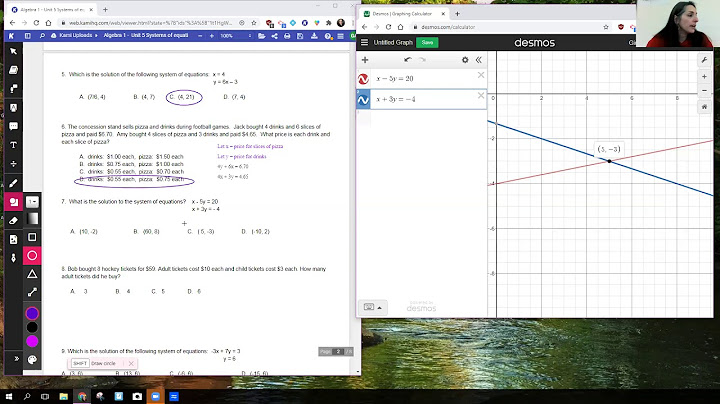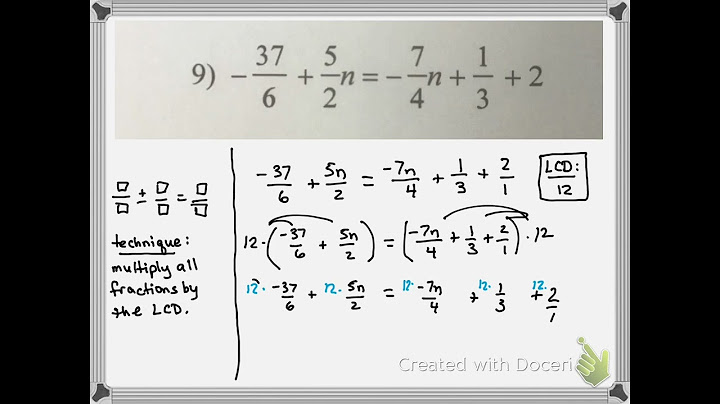You can graph a line given an equation in slope-intercept form by making a table of values. Choose a few x values and plug those values into the equation to find the corresponding y-values of the coordinate point. Plot the points on the graph. Connect the points to draw the line. The problem we’re about to do shows up in almost every Math textbook with maybe some different numbers. Here’s what it says, graph the line y equals -2x plus 3 using a table of values. So what I want to do is somehow get from this equation to a few points that I can connect with a ruler. Here’s what I’m going to do first, is set up my table of values, I’m going to do it vertically, you can also do it horizontally doesn’t matter, and I’m going to pick a few x numbers that I’m going to want to plug in. It’s usually a good idea to use negative numbers as well as positive numbers so you can see what happens all the way across your (x,y) coordinate plane. Then what I’m going to do is substitute in one at a time each x value and find the corresponding y value. For example, when x equals -1, my y value is going to be -2 times -1 plus 3, which means y is going to be 2 plus 3 which is 5. That’s going to be the first dot on my graph (-1,5). Then when the x equals zero I’ll do the same process. Y is going to be -2 times 0 plus 3, y is going to be 3. Go through and do this table and I’ve already done this ahead of time so I do know what the answers are but when you do this, these are the answers you should get for your y values that correspond to your x values. Now once you have your table ready to go, you can put those dots on the graph. Here’s what I mean, my first dot is (-1,5), so on the coordinate plane I’m going to go -1 in the x direction, up to +5 in the y direction, one two, three, four, five boom, draw my dot. Here’s my next one. Zero side to side up three, (1,1) and (2,-1). They look pretty good. I’ll know my table is correct if when I use a ruler, I get an exactly ruler straight line. So let’s just hope, cross your fingers that I did this correctly. All right, there it is that’s the line that’s described by this equation. So again you guys I just want to point it’s important to use both negative numbers and positive numbers so you can be sure you have the whole shape across the coordinate plane. Also make sure you stick arrows on the end of your line. This line doesn’t just stop there and stop there just because my table stops there this line goes forever and ever out of this direction. If I have like the world’s largest ruler, I would go all the way out into outer space but of course I can’t do that. So that’s another thing to keep in mind, these arrows indicate that it goes forever and ever in those directions. The last thing I want to make sure you guys are careful to do is make sure your points are on a ruler straight line. If I had made an error in my table like let’s say I had (-2,0) then this point right here, wouldn’t fit on the ruler straight line. That would indicate to me that I had made an error and I’d have to go back and revisit my table. So keep those steps in mind, be really precise, it helps to write out a lot of information as you go and use a ruler so you have great looking graphs.
 Get the most by viewing this topic in your current grade. Pick your course now. IntrosLessons ExamplesLessons
Graphing Linear Equations: Using a Table of ValuesPacket includes: 24 practice problems and an answer key. Description: This packet helps students practice graphing linear equations using a table of values. It includes problems ranging from finding the points on the lines and imputing them into a table of values to graphing lines using an equation of a line and a table of values. Each page starts with easier problems that get more difficult as students work through the packet. After doing all 24 problems, students should be more comfortable doing these problems and have a clear understanding of how to solve them. Sample Problem(s): Simple: On each coordinate plane use the table of values to draw each line. x [2] [3] [4] y [1] [2] [3] Advanced: Use the equation of each line to make three points and graph it on the coordinate plane. y=2x+5 x [ ] [ ] [ ] y [ ] [ ] [ ] Notes: Practice problems require knowledge of adding and subtracting integers. Downloadable File(s):
What is a table of values example?A table of values is a graphic organizer or chart that helps you determine two or more points that can be used to create your graph. Here is an example of a table of values for the equation, y= 2x + 1.
|

Related Posts
Advertising
LATEST NEWS
Advertising
Populer
Advertising
About

Copyright © 2024 moicapnhap Inc.


















